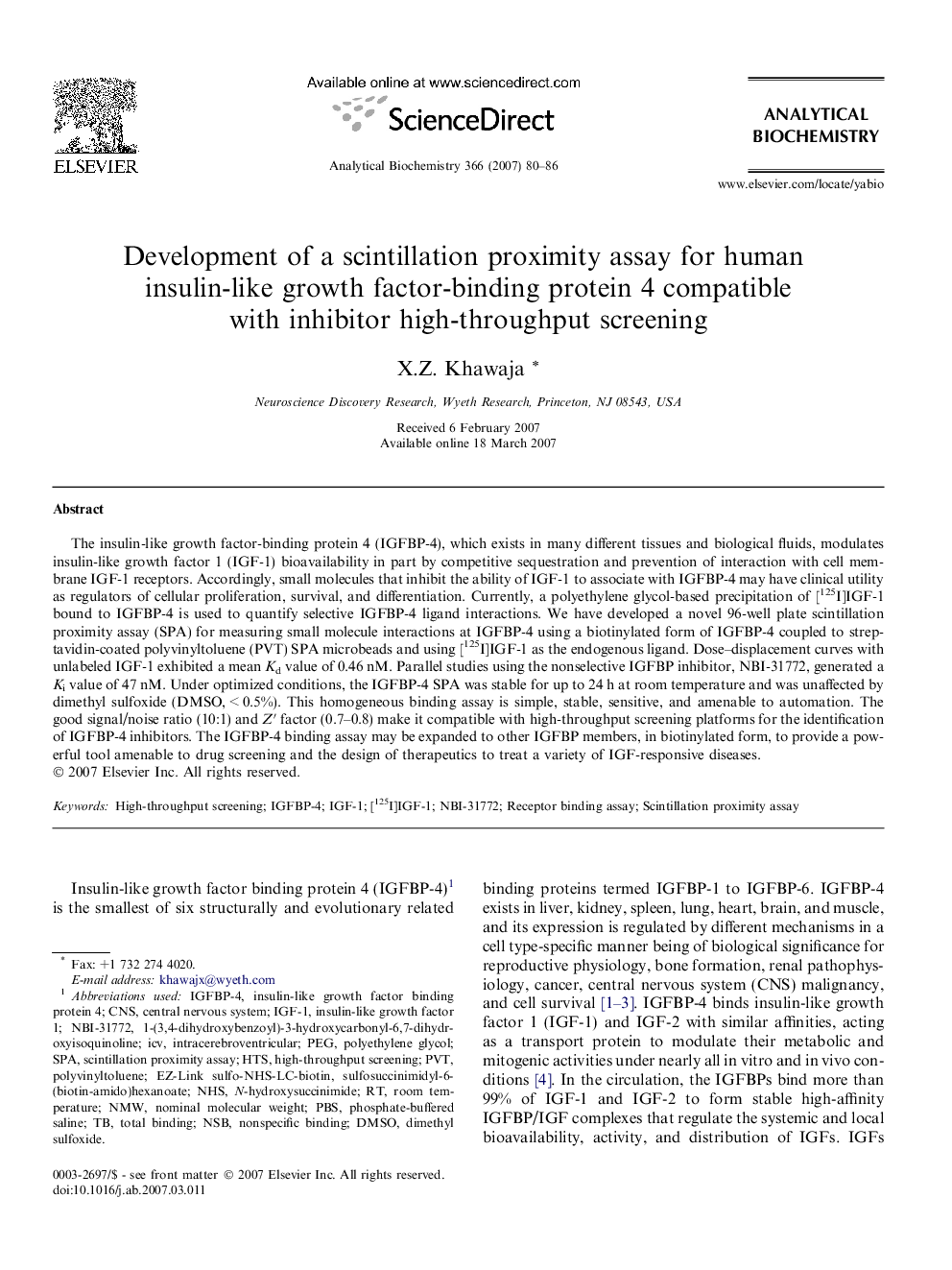| Article ID | Journal | Published Year | Pages | File Type |
|---|---|---|---|---|
| 1177355 | Analytical Biochemistry | 2007 | 7 Pages |
The insulin-like growth factor-binding protein 4 (IGFBP-4), which exists in many different tissues and biological fluids, modulates insulin-like growth factor 1 (IGF-1) bioavailability in part by competitive sequestration and prevention of interaction with cell membrane IGF-1 receptors. Accordingly, small molecules that inhibit the ability of IGF-1 to associate with IGFBP-4 may have clinical utility as regulators of cellular proliferation, survival, and differentiation. Currently, a polyethylene glycol-based precipitation of [125I]IGF-1 bound to IGFBP-4 is used to quantify selective IGFBP-4 ligand interactions. We have developed a novel 96-well plate scintillation proximity assay (SPA) for measuring small molecule interactions at IGFBP-4 using a biotinylated form of IGFBP-4 coupled to streptavidin-coated polyvinyltoluene (PVT) SPA microbeads and using [125I]IGF-1 as the endogenous ligand. Dose–displacement curves with unlabeled IGF-1 exhibited a mean Kd value of 0.46 nM. Parallel studies using the nonselective IGFBP inhibitor, NBI-31772, generated a Ki value of 47 nM. Under optimized conditions, the IGFBP-4 SPA was stable for up to 24 h at room temperature and was unaffected by dimethyl sulfoxide (DMSO, < 0.5%). This homogeneous binding assay is simple, stable, sensitive, and amenable to automation. The good signal/noise ratio (10:1) and Z′ factor (0.7–0.8) make it compatible with high-throughput screening platforms for the identification of IGFBP-4 inhibitors. The IGFBP-4 binding assay may be expanded to other IGFBP members, in biotinylated form, to provide a powerful tool amenable to drug screening and the design of therapeutics to treat a variety of IGF-responsive diseases.
